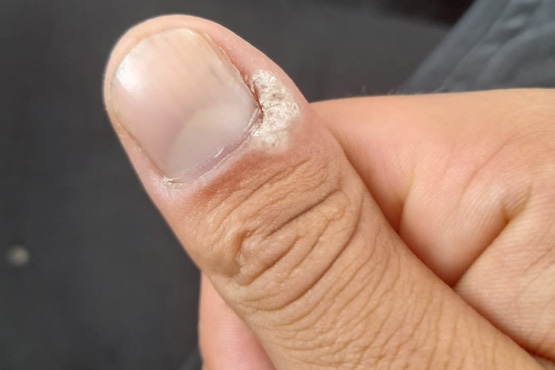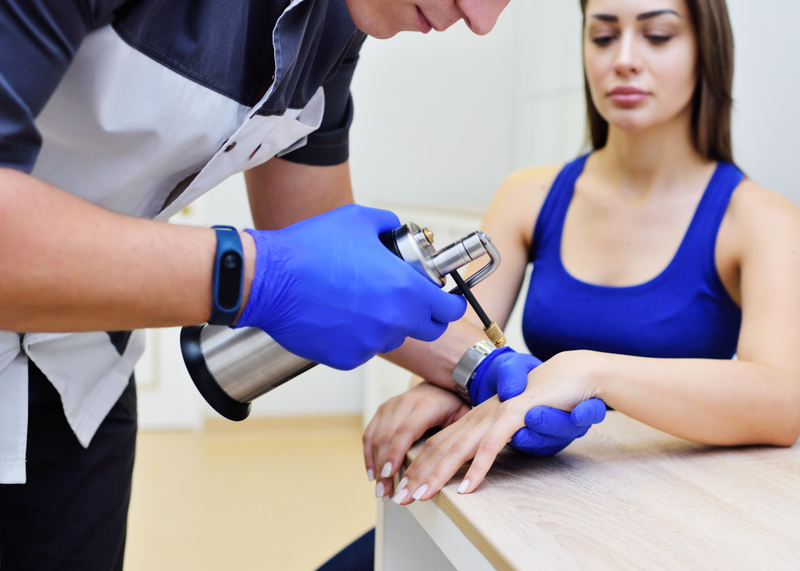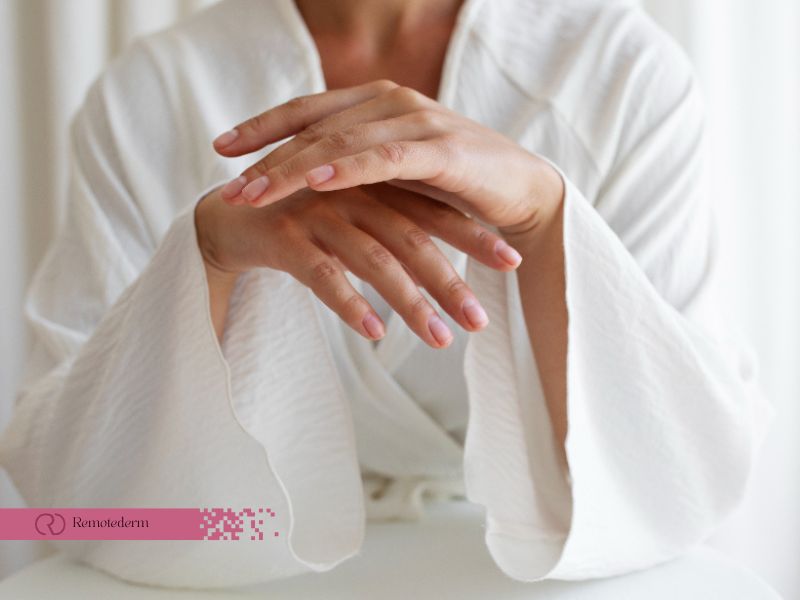Periungual warts can be a real pain—literally and figuratively. These warts grow around the nails, making everyday tasks uncomfortable and sometimes even embarrassing. If you’re in Canada, the harsh weather can exacerbate skin conditions, making treatment even more crucial. This guide covers everything you need to know about periungual warts, including treatments, whether they’re contagious, and how to prevent them from spreading.
What Are Periungual Warts?
Periungual warts are a type of wart caused by the human papillomavirus (HPV). They appear around the fingernails or toenails and can be painful, especially if they grow under the nail. Key Characteristics of a Periungual Wart:
- Small, rough growths around the nails.
- Can merge into clusters over time.
- Often painful, especially when pressure is applied.
- May cause changes in nail shape or texture.
If left untreated, these warts can grow and damage the surrounding skin and nails.

Are Periungual Warts Contagious?
Yes, periungual warts are highly contagious. They spread through direct contact with infected skin or surfaces. Common Ways a Periungual Wart Spreads:
- Skin-to-Skin Contact: Touching someone with warts can transmit the virus.
- Shared Items: Using the same nail tools, towels, or shoes as an infected person.
- Nail Biting: Creates tiny cuts that allow the virus to enter the skin.
If you’re dealing with periungual warts, avoid sharing personal items and keep the area covered to prevent spreading the virus to others.
Can a Periungual Wart Spread to Genital Warts?
While q periungual wart is caused by certain strains of HPV, genital warts result from different strains of the same virus. It’s rare for a periungual wart to directly cause genital warts, but improper hygiene or touching both areas can increase the risk of cross-infection.
Can Periungual Warts Cause Cancer?
HPV is associated with certain types of cancer, but the strains that cause periungual warts are generally not linked to cancer. However, chronic HPV infections can sometimes lead to complications, so it’s best to treat warts promptly and consult a dermatologist if you’re concerned.
Periungual Warts Treatment Options
Treating a periungual wart can take time, but there are several effective options, both at home and through professional care. If you’re unsure which treatment to use, Nail online dermatology services in Canada can provide expert guidance and even prescriptions tailored to your needs. Below are some professional Periungual Warts treatment methods:
- Cryotherapy: A dermatologist freezes the wart with liquid nitrogen.
- Electrosurgery: Uses an electric current to burn off the wart.
- Laser Therapy: Targets and destroys the wart tissue with precision.
- Chemical Peels: Prescribed for stubborn warts, especially near sensitive areas like nails.

Preventing Periungual Wart
Preventing periungual wart requires good hygiene and avoiding exposure to HPV. Tips for Wart Prevention:
- Don’t share nail tools, towels, or shoes.
- Avoid biting your nails or picking at the skin around them.
- Wash your hands regularly and moisturize to prevent tiny cracks in the skin.
- Use gloves when handling harsh chemicals that can weaken your skin’s barrier.
Nail Diseases Chart: Spotting Other Issues
Periungual warts are just one issue that can affect the nails. A nail diseases chart can help identify other conditions:
| Nail Condition | Symptoms | Cause |
| Periungual Warts | Rough growths around nails | HPV infection |
| Fungal Infections | Yellow, thickened nails | Fungal overgrowth |
| Psoriasis | Pitted or crumbling nails | Autoimmune disease |
| Spoon Nails (Koilonychia) | Nails curve upwards | Iron deficiency |
If you’re dealing with unusual nail symptoms, consult a dermatologist or use online nail dermatology services to get a proper diagnosis.
Periungual Wart in Canada: What to Know
Canada’s climate can impact periungual wart treatment and prevention. Cold winters and dry air can weaken the skin’s barrier, making it easier for HPV to take hold. Here are some Canada-Specific Tips:
- Use a thick moisturizer during winter to keep hands and nails hydrated.
- Wear gloves outdoors to protect skin from cracks caused by freezing temperatures.
- Disinfect nail tools regularly to reduce the risk of infection.
Final Thoughts
Periungual warts can be stubborn, but with the right care, they’re manageable. From at-home remedies to professional treatments, there are plenty of ways to tackle these pesky growths. Prioritizing hygiene and proper nail care can also prevent them from coming back.
If you’re unsure about treatment options or need personalized advice, online nail dermatology services in Canada can help you navigate the process. Don’t let periungual warts keep you down—take action today.
FAQs
Are periungual warts painful?
Yes, they can be painful, especially if they grow under the nail or are pressed during activities like typing or gripping.
Can children get periungual wart?
Yes, children are more likely to develop warts due to their developing immune systems and habits like nail biting.
How long does it take for periungual warts to go away?
Without treatment, they can last for months or even years. With proper care, they usually improve within weeks to a few months.
Can periungual wart affect nail growth?
Yes, if the wart is under the nail or puts pressure on the nail bed, it can cause changes in nail shape or slow down nail growth.
